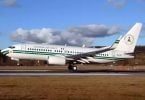DUBAI – Tourist traffic to the UAE is expected to recover this year and will gain further growth momentum in 2011 in the wake of promotional campaigns initiated by various emirates, Business Monitor International (BMI) said. BMI, a leading global economic research and data provider, also revised its forecast of negative growth in the UAE tourism in 2009.
“Based on more favourable data than expected from Dubai, we have edged up our forecast of negative growth in tourist arrivals to the UAE as a whole from -3 per cent to -2 per cent year on year in 2009. This scenario also underscores attempts by individual emirates to boost domestic tourism,” BMI said in its latest report on the country’s tourism prospects.
The report, sounding bullish about the sector’s long-term prospects, said the short-term outlook for the tourism sector remained weak.
Given the “relatively modest growth” in tourist arrivals to Dubai in the first half of 2009 and “very disappointing data” on visitors to Sharjah over the same period, BMI maintains a rather poor outlook for the UAE tourism sector in the short term,” the report said.
The better than expected outturn for tourist arrivals to Dubai is partly due to promotional campaigns in key source markets such as the UK, Germany, India, Russia, China, Japan and the GCC states.
Adding further momentum to Dubai’s tourism promotion drive is the emirate’s efforts to lure more cruise tourists by facilitating the arrival of an increased number of bigger luxury cruise liners to its modern terminal facility that will be fully operational on January 23. The new terminal will enable bigger cruise liners to bring tourists.
“We expect to receive 120 ships and more than 325,000 passengers at the new state-of-the art terminal this year compared to 100 vessels and around 260,000 tourists in 2009,” said Hamad Mohammed bin Mejren, Executive Director Business Tourism at the Dubai Department of Tourism and Commerce Marketing (DTCM).
In 2011, DTCM expects to receive 135 ships with 375,000 passengers followed by 150 ships with 425,000 passengers in 2012, 165 ships with 475,000 passengers in 2013 and 180 ships with 525,000 passengers in 2014 and 195 ships with 575,000 passengers in 2015.
“In Sharjah, by contrast, there was a sharp deterioration in the number of tourists staying at hotels in the first half of the year, down by 12 per cent year on year,” the report said.
Hotels in the UAE continued to struggle in November with lower occupancy rates and a 28 per cent drop in revenue per available room (revPAR), according to latest industry figures, data compiled by STR Global shows.
Occupancy rates in the country fell by nearly nine percent last month, compared to the same month in 2008, to 75.5 per cent. While revPAR plummeted by 28.3 per cent, a year-on-year 21 per cent drop in average daily rate also hit hotels, it said.
The figures revealed contrasting figures for Saudi Arabia, which showed increases in all three categories. Occupancy rates in Saudi Arabian hotels was up by more than three percent at nearly 63 percent in November, compared to a year earlier.
Overall, the Middle East region’s hotel industry saw revPAR drop year-on-year by more than 16 per cent.
Reflecting the dismal trend, the number of hotel projects planned in the Middle East showed a decline of 17 per cent in the third quarter of 2009 to 460 and the number of rooms planned declined 15 per cent to 140,061, according to a report by a US-based hospitality research firm Lodging Econometrics.






















